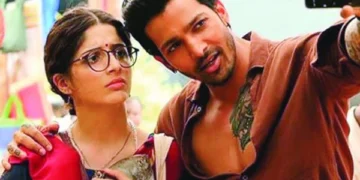Timsal Fatima
The once kaleidoscopic art of South Asia that colored the threads of time has now been blanched by the conservators of divinity. I would never have had the urge of visiting old Lahore until one of my esteemed professors asked me to. Beginning the journey from Mori Gate, I minutely observed nearly everything, from “Laal Badshah Supaari” to an old uncle cursing music. Old Lahore does not only cater the tangible filth but also that of dogmatic minds. The bitter realities, only for the concerned ones, are not easy to comprehend in words. It is no wonder that art not only serves as a mediator between the internal conflicts and absolute altruism, but also shapes the civilizational edifice of societies. The societies that relinquish their ‘Fartistic Fisc’ can never comprehend the blurred lines between love and animosity. It is certainly not easy to have the blood of native soil running in one’s veins. This challenge of conservation encompasses the South Asians when it comes to any form of art, be it visual or performing arts. Today, art breathes its last vestiges in the crumbling laps of a few ‘cultured families’ of South Asia. They serve the ones willing to be amused with their art.
Behind the torn off curtains, under the shadows of forgotten tales, “Love entwines within each note of crafting and echoing of melody.” says a Pakistani craftsman.
The originality of South Asian music dates back to Indus Valley Civilization. It was further patronized by the princely courts. Back in history, we find the testimony of the involvement of musical instruments in recitations of Sufiayana Kalams. Art has never been separated from the intrinsic contentment of the human soul. The possession of music by nature itself disdains human denial of art. Sarangi, the ‘hundred colored’, is an instrument that has lost the discerning ears. Though we still get to hear the echoes of Qawwalis in historical sites but their value is lost somewhere in the fresh adversities. After all, the wolves and sheep can never understand music.
Kathak, as an art form, is dying. Professional dance is known to challenge one’s mind and body.
The rhythmic movements of dance and accompanying musicals depict the essence of human emotions. The very initial lesson of any professional dancing is “Natya Kramaha” (bringing the five senses together). Doubtlessly, the existence of a profound individual cannot be imagined without knowing dance.
Classical dance finds its origins since 200 BCE in India, performed as a devotion to Hindu deities. The animosity of people towards dance was not much in Pakistan until late General Zia’s period when it was dubbed as ‘dance is an obscenity’.
The repercussions of that prohibition are manifested through people’s behavior towards dance till today.
It is pertinent to encompass the visual arts of this region. South Asia is the hub of mosques, tombs, gardens and mausoleums. The spacious historical buildings represent the liberal and tolerant mindsets of its pioneers.
It is daunting to see the deteriorating conditions of these architectural masterpieces. I had a chance of visiting Masjid Wazir Khan, Lahore once. The exterior of the mosques is embellished with the title work called Kashi-kari.
Within the mosque, an obvious endeavor has been made to rebuild a section- a failed one. The difference of architectonics was evident to the point where that section looked as if it did not belong there. It remains a fact that we cannot recreate the exact artwork but we can make attempts to conserve the same. The revamping of these architectures, in a way that does not harm the originality, can be a crucial step.
There are certain barriers that hinder the development of art and its true essence. The ban on art dates back again to late General to Zia’s period. It is quite ironical that few of the religious clerics, who preach religion which teaches us to prioritize humanity over schisms, label the artists and craftsman as infidel.
One of the challenges is commercialization of modern forms of artworks. Even the people who once called themselves as the guardians of legacy have inevitably turned their backs to culture due to market-oriented frameworks. There is no wage or a tangible reward in return to the hard work that is put in the learning of any art. The attention span and level of patience that is needed to bear the weight of culture is absent in modern generation.
Our soil craves for another Noor Jehan and Mohammed Rafi. When Mehdi Hassan sang, “Main hosh mein tha”, our hearts could experience the raw and unblended emotions. I often have a regretful longing when I realize that the upcoming newer generation will never experience the pleasure hidden in the cores of unhealed wounds that is felt while reading Kaalidasa’s “Sakuntala”.
The societies that disown their cultural art, belong nowhere.
We still, in my feeble hopes, possess the ability to uphold our heritage. The musicians and craftsmen still await their phantom patrons in their old shops, in hope of a day when they will not have to bury their art under their rented houses. Someday, our clocks will start ticking again.
The author is a student of
English Literature at the GC
University, Lahore and can be contacted at:
timsalfatima27@gmail.com




















